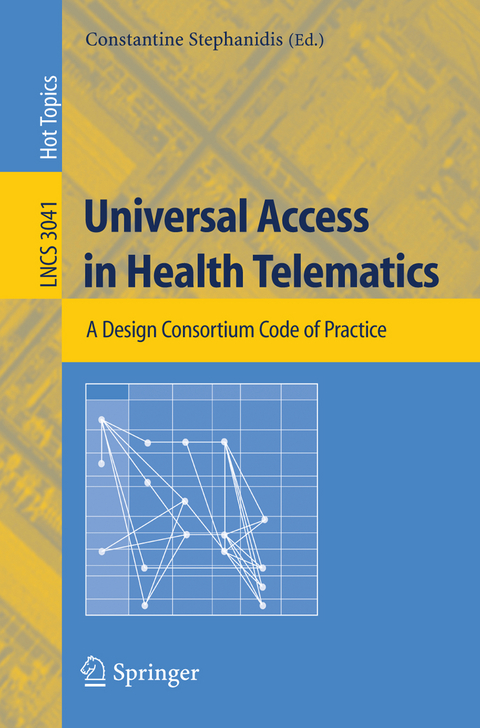
Universal Access in Health Telematics
Springer Berlin (Verlag)
978-3-540-26167-4 (ISBN)
Universal Access in Health Telematics.- 1 Universal Access.- 2 Trends in Health Telematics: Electronic Health Records in an Intelligent and Communicating Environment.- 3 Towards a Universal Access Code of Practice in Health Telematics.- Reference Scenarios.- 4 The HYGEIAnet Reference Scenario.- 5 The SPERIGEST Integrated System.- 6 The Barmerzige Schwestern Reference Scenario.- 7 The ClinicCoach Reference Scenario.- 8 WardInHand - Mobile Access to EPRs.- 9 Patients and EHRs Tele Home Monitoring Reference Scenario.- 10 MediBRIDGE / C-CARE: Remote Access to EPRs.- Design for All Methods and Their Application.- 11 The Universal Access Assessment Workshop (UA2W) Method.- 12 Applying the Unified User Interface Design Method in Health Telematics.- 13 Using Non-functional Requirements as Design Drivers for Universal Access.- 14 Screening Models and Growth Scenarios.- 15 W3C-WAI Content Accessibility Auditing.- 16 Usability Inspection of the WardInHand Prototype.- 17 Multimodal Interfaces - A Generic Design Approach.- 18 Role-Adapted Access to Medical Data: Experiences with Model-Based Development.- 19 MedicSCORE and the Evaluation of ClinicCoach.- 20 Standards Adherence and Compliance.- 21 Participatory Insight to Universal Access: Methods and Validation Exercises.- 22 IS4ALL Method Base: Choosing Micro-methods and Tailoring to Custom Practices.
| Erscheint lt. Verlag | 2.6.2005 |
|---|---|
| Reihe/Serie | Information Systems and Applications, incl. Internet/Web, and HCI | Lecture Notes in Computer Science |
| Zusatzinfo | X, 317 p. |
| Verlagsort | Berlin |
| Sprache | englisch |
| Maße | 155 x 235 mm |
| Gewicht | 510 g |
| Themenwelt | Mathematik / Informatik ► Informatik ► Betriebssysteme / Server |
| Informatik ► Software Entwicklung ► User Interfaces (HCI) | |
| Schlagworte | Assistive Technology • Bridge • electronic health • Electronic Health Record • electronic health records • Gesundheit • Hardcover, Softcover / Informatik, EDV/Betriebssysteme, Benutzeroberflächen • HC/Informatik, EDV/Betriebssysteme, Benutzeroberflächen • Health Informatics • health telematics • human-centered design • Human Factors • Information Society • interactive software • is4all • Medical Informatics • Medizinische Datenbanken • Medizinische Informatik • Monitor • telemedicine • Universal Access • User-Centered Design • User Interfaces |
| ISBN-10 | 3-540-26167-2 / 3540261672 |
| ISBN-13 | 978-3-540-26167-4 / 9783540261674 |
| Zustand | Neuware |
| Haben Sie eine Frage zum Produkt? |
aus dem Bereich


